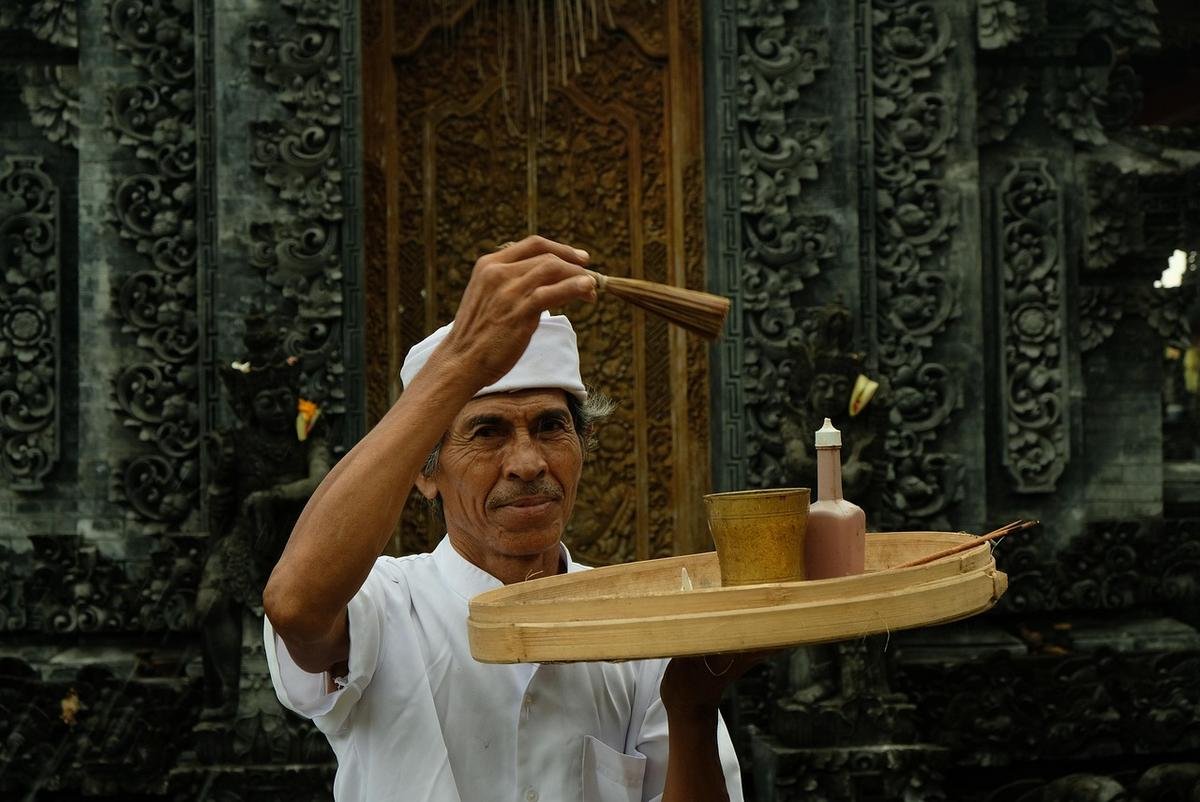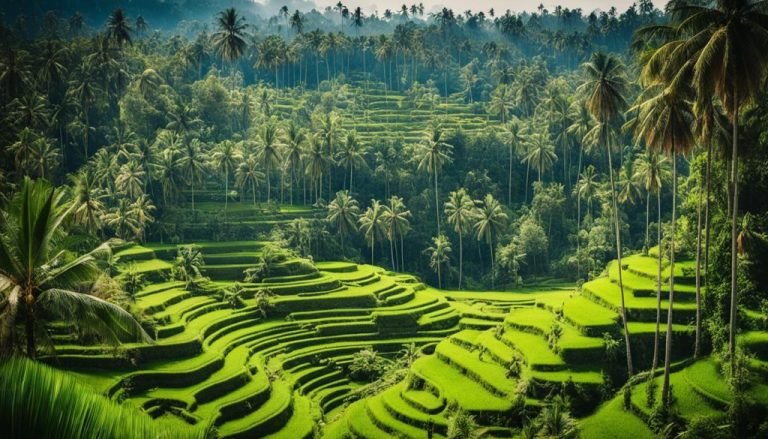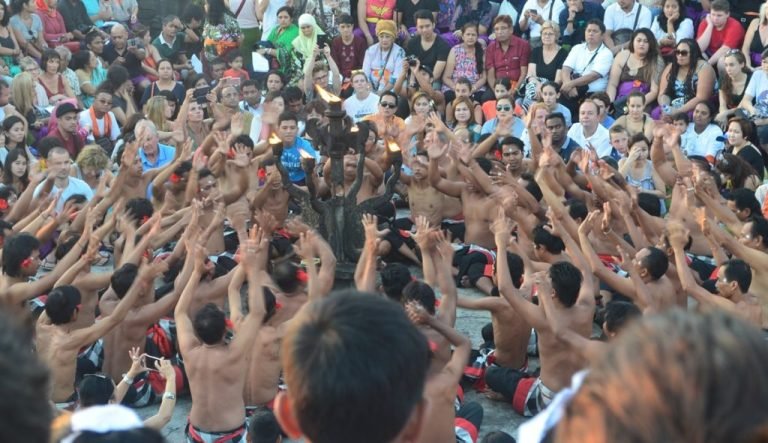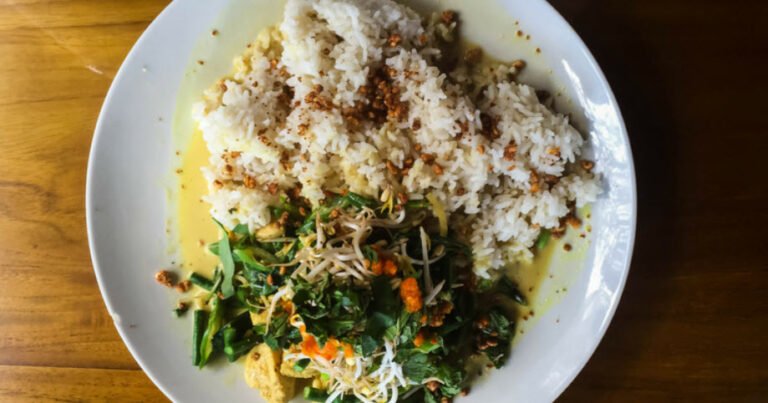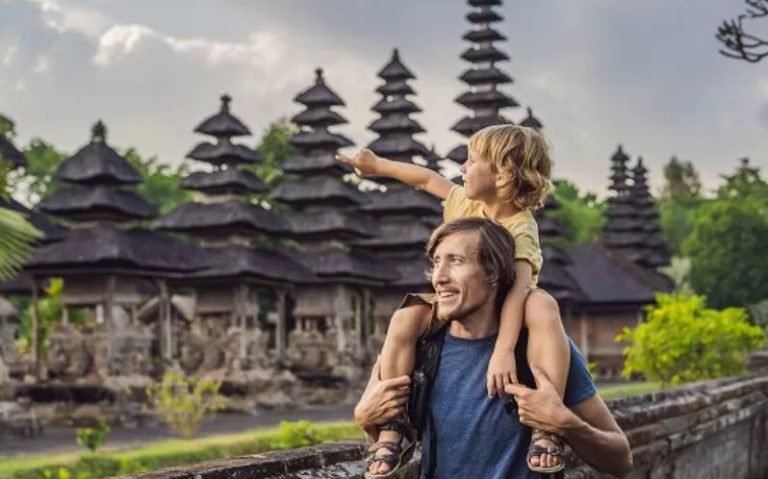Barong Nong Nong Kling Statue Guards Bali’s Desa Aan Against Plague Outbreaks
Balinese Hindu worship centers on temples, each of which typically enshrines a pratima, a sacred statue venerated by locals. This pratima stands in for the "Deity" or "Ida Bhatara" in tangible form—often carving or painting—serving as an intermediary with God, known as "Ida Sang Hyang Widhi Wasa." In Hindu belief, the pratima does not embody the divine essence itself but represents the infinite nature of Brahman. Devotees regard it as a reminder that God permeates everyday life and the universe. Devotion to pratima has endured for centuries, passing spiritual values and local customs from one generation to the next.
Among these pratima, the Barong Nong Nong Kling statue occupies a unique place at Suwela’s Temple. Located in Aan Village in Banjarangkan District, Klungkung Regency, it dates back to 1580. Jero Agung Pasek Gelgel Aan established the site after he received a pawisik, or divine revelation, directing him to a pair of banyan trees that formed a natural gateway. The trees came to symbolize equilibrium, resilience, and protection. The temple’s name combines "Su," meaning good, with "Wela," meaning forest or mountain. Since then, Suwela’s Temple has served as the center for ancestral veneration and spiritual rites.
Inside its inner sanctum, the community honors ancestors known as Ratu Lingsir, regarded as a form of Lord Bhagawan Penyarikan, or Sang Hyang Pasupati, the deity representing cosmic order and power. Each year, the temple holds its piodalan festival on Purnama Kapat, the fourth full moon in the Balinese calendar. A second major observance takes place on Tumpek Landep, a day dedicated to weaponry and the metalsmith craft, now extended to honoring ancestors and resident gods. Festival rites include processions, offerings, and rituals performed by temple priests, village elders, and musicians. These ceremonies reinforce the bond among worshippers, the unseen world of spirits, and the surrounding natural environment.
In 1755, Purana texts describe Aan Village suffering a harsh drought and widespread crop failure. A pawisik instructed residents to fashion a Barong Nong-Nong Kling figure as a talisman. During the Ngelawang ritual that followed, the creature paraded through paddy fields and village lanes to cleanse the land. Gamelan bands trailed the procession, their instruments producing the unmistakable "nong… nong… kling…" motif. Performers donned masks of Hanuman, Sugriwa, Subali, and Ravana instead of the customary lion-like barong. Local storytellers blended dance and drama scenes from the Ramayana, centering on the "Kerebut Kumbakarna" episode, as villagers sought to bring relief and revive soil fertility.
Barong Nong-Nong Kling evolved into more than a ritual tool. It became a living pratima, a spiritual guardian woven into Aan Village life. At Suwela’s Temple, this figure appears during festivals on Galungan and Kuningan, calling on ancestral spirits to protect the land and people. Temple caretakers report that the performance keeps natural forces in harmony. Musicians, dancers, and elders join forces for Ngelawang each season. Through art and ceremony, they express gratitude, mend communal bonds, and pass heritage to younger generations. Preservation efforts now include training workshops and archive projects to ensure the Barong Nong-Nong Kling legacy endures.
Preparation for a Barong Nong-Nong Kling show starts in the Bale Penyimpenan, where caretakers open chests to retrieve carved masks, costumes, and ceremonial props—a process called nedunang. Village women create banten offerings by weaving jejahitan leaves, rice, flowers, and palm fronds. When the time arrives, participants gather for prayers. Priests sprinkle tirta, holy water, over masks and banten as incense coils burn and villagers chant. Arak, brem, and tuak are placed near the Utama Mandala stones. Once the items receive the priest’s blessing, seven performers don their masks, form a line, and move through the temple gate into the courtyard, engaging the crowd directly.
Daily rituals at Suwela’s Temple illustrate Balinese Hindu devotion. Silver-topped gates open each dawn, allowing offerings to be placed before the pratima housed in dozens of shrines across the grounds. Candlelight flickers over carved wooden panels and stone reliefs as incense trails upward. At dusk, gamelan drums resonate through bamboo-walled pavilions ahead of evening puja. On festival days, the Barong Nong-Nong Kling procession emerges, a vivid reminder of unseen guardian spirits that safeguard land, sky, and sea. Children gather at the courtyard edge, wide-eyed, as dancers leap and twirl. Village elders explain that each movement and rhythm preserves ancestral lore, binds communities, and seals the promise of renewal.
In recent years, cultural activists, temple officials, and youth groups have formed committees to document every detail of Barong Nong-Nong Kling. Audio recordings of gamelan scores, notes on choreography, and interviews with veteran performers fill digital archives. Plans are underway to establish a local museum within the Temple grounds, featuring relics from each era of this art form. School programs now include field trips to Suwela’s Temple, where students learn about the pratima, the pawisik stories, and the art of mask carving. Elders and teachers stress that these efforts foster respect for ancestral wisdom and ensure that Aan Village’s living traditions endure.
Suwela’s Temple stands as a living record of the bond between Balinese Hindus, ancestral guidance, and their environment. The Barong Nong-Nong Kling mask and dance drama symbolize protection when trouble strikes. They reflect a community’s commitment to maintain equilibrium among spiritual, human, and natural domains. As new generations take on roles as mask makers, musicians, and dancers, the tradition lives on. For locals, the ritual remains as vital today as it was centuries ago, woven into everyday faith.

